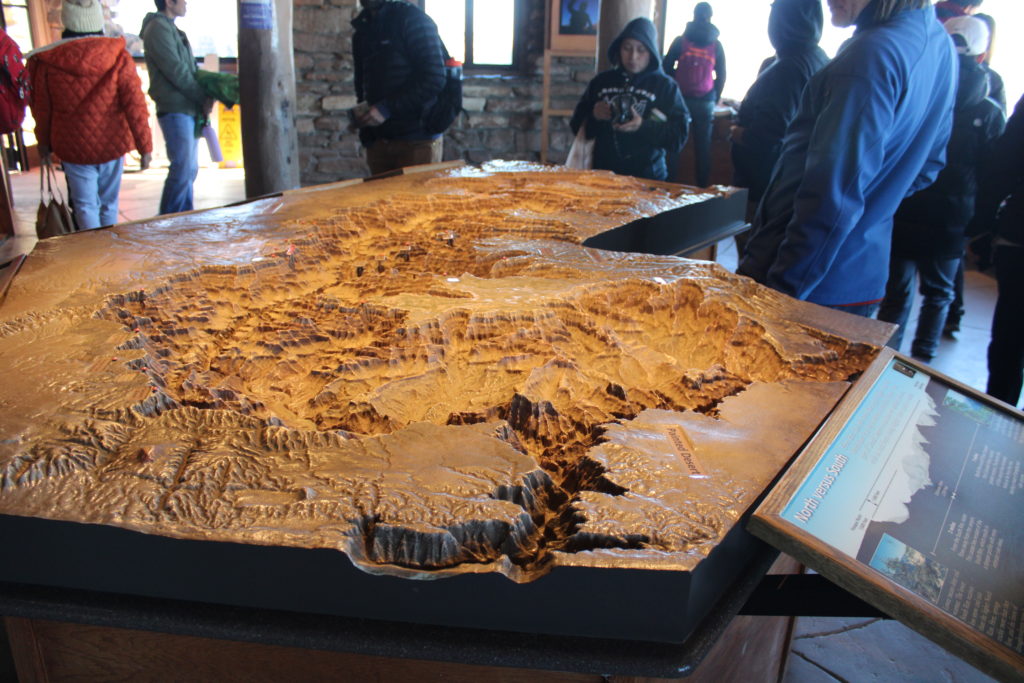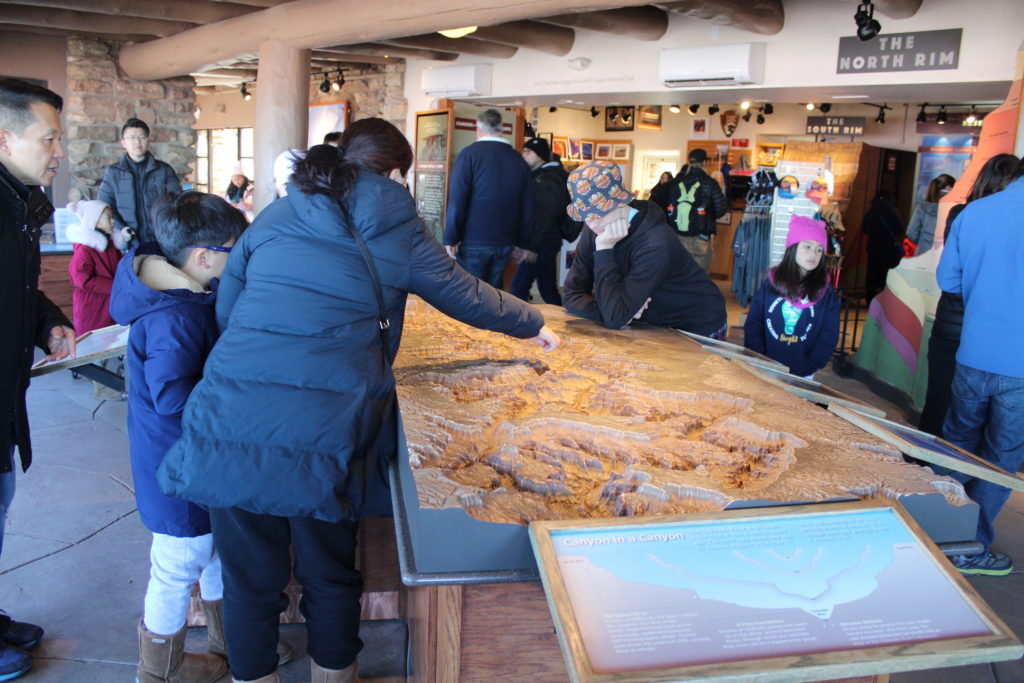Relief models are designed to give the observer an “angel’s eye view” of a landscape, as I describe it in my book. There is no intellectual experience like it–to have an instantaneous view of hundreds of square miles at a glance allows the brain to understand the topography, slope, terrain, proximity, and geologic processes together as a system.
I’d heard for many years from readers about a large relief model at the Grand Canyon, and in 2022 I finally got a chance to see and document how people interacted with it. The model below is a Civilian Conservation Corps (CCC) model set as a tabletop display in the Yavapai Geology Museum. You can also see the model on the NPS website here: https://www.nps.gov/grca/planyourvisit/yavapai-geo.htm.

The nexus of elements helps us understand SCALE, or the relationship of one unit of measurement to another: the deep canyon walls compared to a human height at the surrounding plateau, the thin thread of the Colorado river compared to the width of the canyon. The folks around this model may have floated down the river the day before, and now struggle with the memory of the frightening 6-foot rapids against their invisible presence from the top. Processed this way, the spiritual impact of the Grand Canyon’s is immediate.

Of most fascination to me were the interactions of the people viewing the model. Like this model, in the 19th century, tabletop presentation was the default position for viewing. Edwin Howell, the premier modelmaker of the time, wrote that people were hopelessly drawn to touch the terrain and to bend down to get a view through the terrain. The plaster material and shellac protection allowed many viewers to run their fingers through the terrain to get a tactile third sense. A sturdy frame the height of the terrain enabled it to be moved to other rooms without cracking, or to even be stood up against a wall. This model was never designed to be hung or stood up. You can see at the model corner (grey paint) that there is no frame surrounding the terrain plaster.
As I watched visitors at Yavapai this day, they lingered around all sides of the model. Parents would point out features to children, who would invariably try to touch them. Other people, like the young man above, would lean on the model and would look in minute detail at the map labels. Fingers would trace roads they had driven to the rim. Some visitors would cock their heads sideways, walk slowly around to a different direction, and then pause.